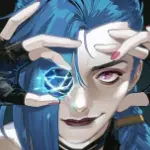There’s something unspeakably beautiful about Studio Ghibli films. Perhaps it’s how they romanticise the simple parts of life, or the strange and enchanting fantasy worlds they contain, or maybe the way an arrow can take off a man’s head in one clean shot.

Princess Mononoke is definitely the black sheep of Studio Ghibli's films - some devoted Ghibli fans even go so far as to say they feel it didn’t fit in with the rest of the studio’s works and didn’t make for a very compelling story. While many attribute this to the film’s darker themes, less character-oriented and more story-driven plot, or violence, though, I think it’s caused by something less simple and far more tragic: the impossibility of translation.
There’s a famous Italian phrase: “Traduttore, traditore” - translator, traitor. It's an incredibly pertinent issue, which I noticed in Princess Mononoke when the kodamas were first introduced. In contrast with the gods and demons previously mentioned in the story, these creatures had a noticeably Japanese name that immediately made them stand out. Literally meaning “wood spirit”, kodamas are said to inhabit trees and are responsible for the delayed echoes in mountains and valleys, which finally explains the charmingly creepy ticking noise they constantly made in the film. Obviously, the concept of tree spirits like these doesn’t exist in most Western cultures, so there is no literal translation and keeping the term “kodama” rather than adding an extensive explanation is best for the flow of the story. My issue, however, comes with the inconsistency around the translations of other Japanese concepts throughout the film.
When translating, you can choose to foreignise the terminology, keeping the original foreign word or name, or you can domesticate the terminology, changing meanings in order to use words with which the audience is more familiar. The kodamas are a case of the former and the gods and demons of the story are an example of the latter. What the film calls gods and demons are more accurately called “kami” in Japanese. Kami are an important mythological concept in Shinto, Japan’s native religion. While their importance can be compared to that of gods, the translation isn’t terribly accurate - on Wikipedia, kami are defined as “deities, divinities, spirits, mythological, spiritual, or natural phenomena, or holy powers”, a much broader definition than “god” implies, including everything from stars to disease to even hair. They are also more closely tied to nature, and translating the term as both god and demon applies a dichotomy to the concept that doesn’t exist in Japanese: kami can be kind and nurturing or they can be cruel and destructive, something we see reflected in the Princess Mononoke's Deer God. Their nature depends on how they are treated, but regardless of their apparent moral alignment, they remain kami.
Normally, domesticating so many terms in a film wouldn’t have a huge impact on the story, but in the case of Princess Mononoke, the translation moves the film too far from the spiritual context at its core. While Miyazaki does not identify as Shinto himself, the film’s themes are deeply connected to the religion. For example, Princess Mononoke explores the idea of purity versus impurity and the importance of respecting the natural world, both central concepts in Shinto. With regards to the concept of purity, there is also the important role of water in the film as a place of protection and healing, drawing strongly on Shinto purification rituals. The film even goes so far as to portray one of the antagonists as Buddhist, Japan’s other major religion, showing a clear preference for a pure Shinto rather than the religious fusion that it has become today.

Because of the audience’s lack of understanding of Shinto, however, all of this is not only missed by most Western audiences, it's beyond their ability to try to even recognise as the domesticated terms take away any indication of the Shinto aspects of the film, preventing those who aren't already familiar with the religion from researching and learning more. The failure in the intercultural “translation” is not limited to the words and religion, either. Mina Le’s video analysing clothing in Studio Ghibli’s films explores the many layers of cultural understanding that Western audiences miss out on. The main character Ashitaka’s appearance and identity, for example, specifically distance him from the Japanese ethnic majority group while still making him clearly Japanese, a context that Western audiences fail to pick up on - even if they did, they would probably fail to understand the cultural weight behind it.
There’s a bittersweetness to human diversity. Thanks to it, we have the privilege of seeing beauty and art in infinitely varied forms, but at the same time, we will never truly understand the works that don’t belong to our backgrounds as a result of it. That is where Princess Mononoke, which is more literally translated as “Princess of Vengeful Spirits”, fails to reach Western audiences - it is unable to communicate the depth of its story. While many of Studio Ghibli’s films draw on Shinto beliefs, their stories are not as reliant on them, so the characters and plot are still understandable to Western audiences in ways that Princess Mononoke isn't. So if you're one of the many who found Princess Mononoke uninteresting and confusing, try researching more about Shinto and Japanese history - not only will you get a deeper appreciation for Mononoke, but it will also deepen your understanding and appreciation of other Japanese media you watch in the future.








Share your thoughts!
Be the first to start the conversation.